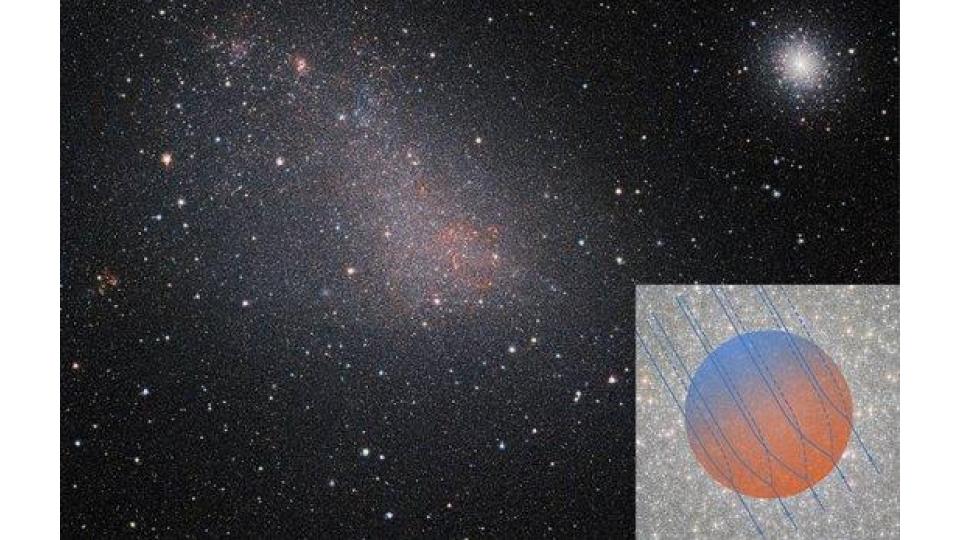
© ESO/VISTA VMC (background image); F. Abbate et al., Nature Astronomy (inset)
One of the most beautiful and confusing globular clusters associated with our Galaxy is 47 Tucana or Tuc, a Southern Hemisphere system that can be seen right off the edge of the much larger Small Magellanic Cloud. This system of millions of stars is both one of the largest and oddest globular clusters we have locally. Unlike other systems, 47 Tuc appears to have undergone multiple periods of star formation, has gas in the cluster, and it just might have a black hole in its center. The weirdo system is home to numerous pulsars, and it is this population of spinning neutron stars that makes 47 Tuc the perfect laboratory to test for galactic magnetic fields.
47 Tuc is located 13,000 ly away in the galactic halo. It had been unclear how much of an effect that our Milky Way’s magnetic field might have at this distance. We simply hadn’t had a way to measure it! Well, thanks to new Parkes Radio telescope observations of this system’s 25 pulsars, we see the presence of a strong magnetic field that is running perpendicular to the galactic disk. This can be seen in how their signals are spread out across different frequencies by the magnetic fields as a function of where they are in the cluster. Pulsars on the far side of the cluster have their signals dispersed more than pulsars on the near side. This strong field was surprising, and it appears that the magnetic field is amplified by interactions of the galactic wind and the cluster material. This was observationally a challenging result to get at, but the physics is straight forward – look at how a magnetic field interacts with a blob of stars in gas. Replicated this result might be tricky however. This kind of dispersion is possible in systems like 47 Tuc that have gas, but … there really aren’t other systems like 47 Tuc.
Still, even if we can’t replicate this result using other globular clusters, this result does confirm our galaxy has one heck of an extensive magnetic field. This work appears in the journal Nature and was led by Frederico Abbate.
More:
Globular cluster billowing in the Galactic wind (Max Planck)




 Join the Crew!
Join the Crew!
 Escape Velocity Space News
Escape Velocity Space News
0 Comments